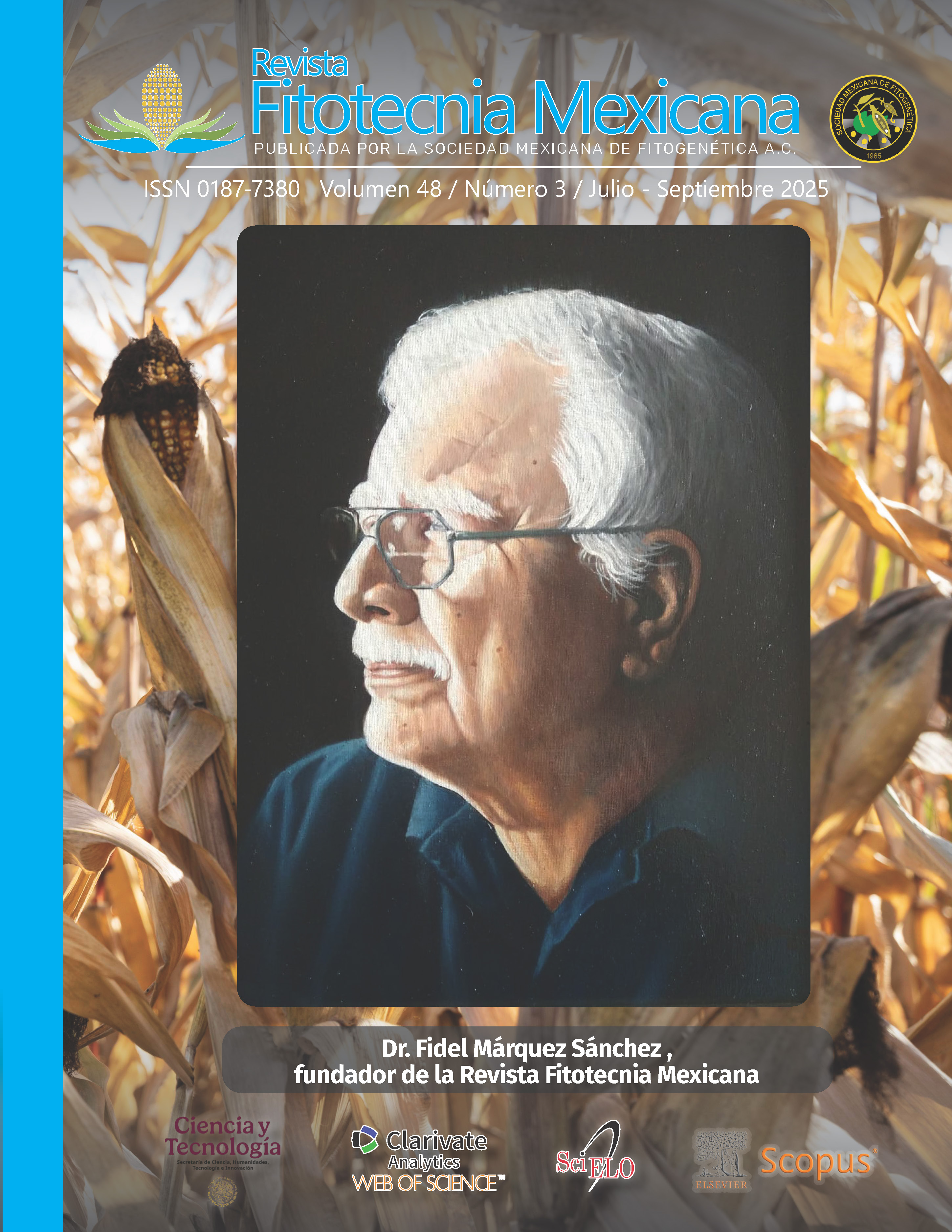GENETICS OF RESISTANCE TO YELLOW RUST IN BREAD WHEAT CULTIVAR ALONDRA F2014
Main Article Content
Abstract
Wheat stripe rust is caused by the biotrophic fungus Puccinia striiformis f. sp. tritici. The pathogen is present in the production areas of the highlands, North, Northwestern and El Bajío in Mexico; its management has been possible through the use of varieties with genetic resistance. The Alondra F2014 cultivar has shown resistance to different physiological races of P. striiformis f. sp. tritici under different evaluation environments. The objective of this research was to estimate the number of resistance genes and their mode of inheritance in the mentioned cultivar against this pathogen. The MEX14.191 race was inoculated in seedling and adult plant trials consisting in 240 F3 families derived from the cross between Alondra F2014 (resistant parent) and Apav (susceptible parent). The reaction to the disease allowed the phenotypic characterization of the population, and the number of genes in seedlings was estimated based on Mendelian segregation analysis by the proportion of homozygous families identical to the parents, the congruence between observed and expected frequencies was determined with the chi-square test (α = 0.05). Hypersensitive reaction was observed in resistant and segregating families in seedling, and the phenotypic characterization was according to the 1:2:1 genotypic ratio, corresponding to the expression of a dominant race-specific gene. Molecular analysis of Alondra F2014 cultivar revealed the presence of non-race specific and pleiotropic effect genes Yr18, Yr29 and Yr30, associated with slow disease development (slow rusting), whose effect was masked by the race-specific gene in the adult plant population assessment. The Alondra F2014 cultivar can be incorporated as a parent in breeding programs to introduce genes for partial and durable resistance to wheat rusts.

